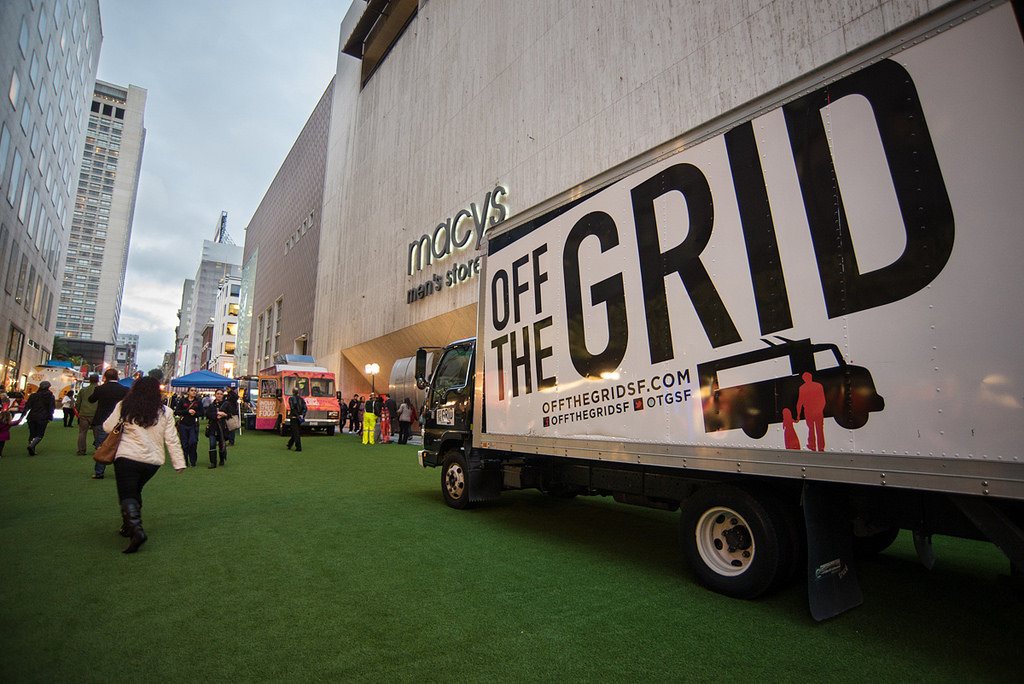- Getting There: West Main to get new kind of street parking
Source: Spokesman-Review; September 5, 2016
Summary: Main Avenue between Division and Browne will be reconfigured to add additional parking and pedestrian amenities. The street will be reduced to two lanes in order to accommodate a third lane of parking in the median, a mid-block crossing for pedestrians with channeling structures that create pedestrian havens, and pedestrian-scale lighting. Local business owners are in favor of the new design.
Opinion: The new design is highly supportive of the activities on the block in question. It will take some time for drivers to adjust to the new configuration, particularly since traffic speeds is likely to reduce. And, of course, there will be the routine scoffing from the peanut gallery (as always, it's important to remember not to enter the cesspool that is the comments section of the Spokesman-Review website). However, with greater parking and pedestrian support, the retailers should benefit. - Rose Pak flashes red light on Stockton Street pedestrian mall
Source: San Francisco Chronicle; August 7, 2016
Summary: When San Francisco tore up Stockton Street to install a subway, the businesses of the Union Square Business Improvement District suffered sales losses (this is a misinterpretation of the data; more on that below). The solution was provide the retailers with a pedestrian area with artificial turf (here is a photo on the installation, provided by the San Francisco Metropolitan Transportation Agency):
This sparked the idea of making a permanent pedestrian mall. However, the adjacent neighborhood is registering an objection because they want the road to be available to bring traffic to their businesses.
Opinion: This demonstrates a fundamental issue in transportation planing in the United States: for whom is the right-of-way designed? The reason why we have this problem is that Americans tend not to differentiate between roads (which are used to increase mobility and provide a path through a place) and streets (which are used to increase access and provide a path to a place. Instead, we design and construct stroads, which do neither task particularly well, and are dangerous to boot. We know instinctively that we do this incorrectly: just think of the number of times you've complained about people driving too fast through your neighborhood. People drive fast on roads and buy things (and live) on streets. Planners need to get property owners to collaborate on what their right-of-way is intended to achieve, and transportation engineers must design to those purposes. - Getting There: Downtown Spokane businesses suffer in construction zones
Source: Spokesman-Review; August 15, 2016
Summary: Businesses adjacent to construction projects in Spokane depend on revenues from people to travel to their locations. But, when construction occurs, customer visits drop (in one case, by half) imperiling the business. Other businesses are less affected because they have a dedicated customer base. Extending construction hours to reduce the length of time isn't effective because it would cost more and the work is job is hard on the workers.
Opinion:Americans are strongly driven by convenience. If the journey to your door isn't convenient, it just isn't taken. Unless you're an anchor (or "destination") retailer, ease of access is key--and that's exactly what government-maintained right-of-ways are providing. I humbly suggest that, rather than take this story as a tale of woe about construction barriers, please view this as a testimonial as to the effectiveness of the roads all the other summers when construction isn't at your doorstep. Yes, it hurts this year, and help would be beneficial, but remember that the road doubles your sales all other years.
This story has been updated. - Omaha's answer to pothole complaints: a new dirt road
Source: Associated Press; August 16, 2016
Summary: To the chagrin of its residents, the City of Omaha is removing pavement in certain neighborhoods. All cities have a long list of deferred road replacement projects, but Omaha is characterized by extreme sprawl. Making short-term deals in order to encourage development results in these long-term deficiencies.
Opinion: The chickens come home to roost. Of course, the initial developers want to avoid costs in order to make their developments more profitable and avoiding building to City standards is one way to do that. Of course, that means that the neighborhood has a responsibility to maintain the road, but they rarely do because, again, they're trying to avoid paying for what they're using. I hasten to add, though, that we shouldn't dismiss the possibility that the City demands that everyone have a stroad in front of their house rather than a street! Regardless, the costs of periodic repavement is substantial, and many people are satisfied with letting some (read: someone else's) neighborhoods degrade. It's high time that the federal and state governments deny funding for and authority to accept new road construction without demonstrating that they have the funds available to properly maintain their road infrastructure.
Four the Future - Reconfiguring Roads
A look at the issues surrounding road reconfiguration: the redesign on Spokane's Community Block, an adjacent neighborhood's opposition to a pedestrian mall proposal, the massively positive effect of roads on retail activity, and a peek in on a little-used alternative.
Subscribe to:
Post Comments (Atom)
No comments:
Post a Comment
This is an interactive blog for people interested planning in the Spokane region or planning in general.